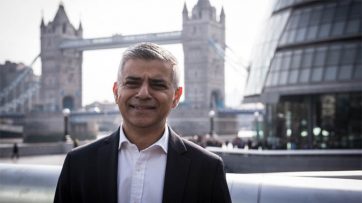The Mayor of London released a statement following the announcement of the delay on the decision where to build a new runway in south-east England.
The Mayor of London believes the Government’s decision to delay a verdict on where to build new aviation capacity in the southeast is a clear indication that they are beginning to realise that the obstacles in the path of expanding Heathrow are insurmountable.
He urged the Government to end decades of debate by definitively ruling out expansion at Heathrow and giving proper consideration to building a bigger and better airport on one of several potential sites to the east of the capital.
The evidence presented to the Government by the Airports Commission already makes it clear that looking east of London would offer the greatest economic potential and is the only feasible way of giving the country the aviation capacity it needs for the long term future.
The Mayor of London, Boris Johnson, said:
“Today is the day that the Heathrow campaign was officially grounded. They have put a superhuman effort into bouncing the Government into a quick decision in their favour but the Prime Minister and his colleagues have refused to allow themselves to be hustled. The wheels are falling off the Heathrow fuselage and I think that, now the Government has hit the pause button, they will begin to understand with ever greater clarity that, due to the environmental impacts, the legal obstacles and the cost to the public purse, this bird will never fly.
“But delay is not the answer. While Britain’s European rivals continue to forge ahead with the construction of multi-runway mega-airports, I have long argued that the most dynamic and forward looking approach would be to look at the sites east of London where a four-runway hub airport could be built. To get to that position we need the Government definitively to rule out Heathrow expansion. I believe that today’s announcement makes that much more likely.”
A new four-runway airport to the east of London would:
- Connect the UK to more than 300 international destinations – far more than any alternative.
- Serve 176 long haul destinations, more than an expanded Heathrow and an expanded Gatwick combined.
- Provide direct connections to new and emerging markets and important economic centres like Belo Horizonte in Brazil, Calcutta in India and Chongqing in China.
- Serve 16 UK cities, many more than an expanded Heathrow or Gatwick could hope to serve.
- Support 25 per cent more jobs nationally than a 3-runway Heathrow and offers the greatest economic potential for the United Kingdom.
- Expose less than five per cent of the people exposed to significant aircraft noise by Heathrow today – at best, the numbers exposed would be virtually zero.
- A new hub would not exceed EU air quality limits or risk delaying UK compliance.
Since his election in 2008 the Mayor has made clear that his Mayoralty would take a creative and open minded approach to the challenges facing the capital. He consistently argued that the reason expansion plans for Heathrow or Gatwick have been debated for several decades is that neither is the answer to the problem.
A feasibility study into the possibility of building an airport in the Thames Estuary and two major reports on the need for new hub airport capacity published during his first term as Mayor put the possibility of expansion away from Heathrow or Gatwick firmly on the public agenda. When the Government announced the establishment of the Airports Commission in 2012 the Mayor made very clear his determination to engage with every aspect of the research carried out by the Commission.
The Mayor’s team submitted hundreds of pages of independent research to the Commission, which clearly showed the limitations at Heathrow and Gatwick compared to the incredible economic potential of expansion to the east of London. When the Commission rejected any possibility of building at Stansted or in the Thames Estuary (despite acknowledging that the benefits associated with building to the east were potentially greater than any of the other options they considered) the Mayor predicted that proposals to expand Heathrow would run into exactly the same hurdles they had met in the past, and that the recommendations made by the Airports Commission would swiftly be made “irrelevant” as now appears to be becoming the case.
It is clear that expansion at Heathrow airport is impossible. A three-runway Heathrow would effectively be full shortly after opening, would expose one million people to unacceptable levels of aircraft noise and risk major EU fines for air pollution. It would simply be an environmental catastrophe and would never pass the legal, political or financial hurdles in its path.
The options for a four-runway hub airport to the east of London at Stansted or in the Thames estuary were discarded prematurely and the Government should give proper consideration to the only feasible plan, which is to build new runway capacity to the east of London where there is the space to build an airport of the size Britain needs to compete with its European rivals.







